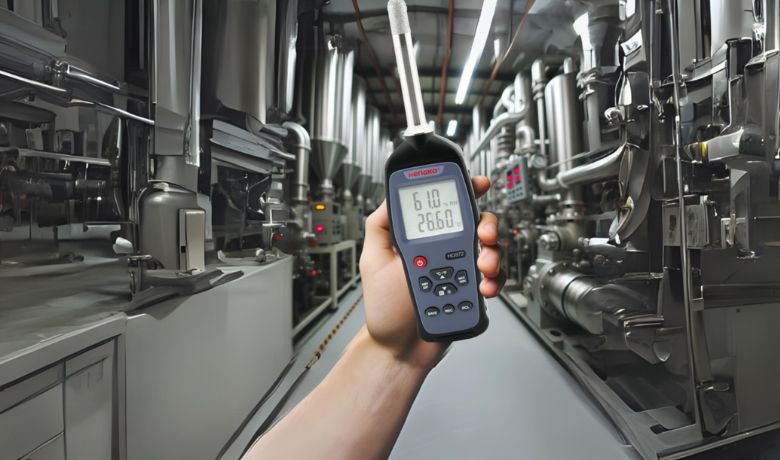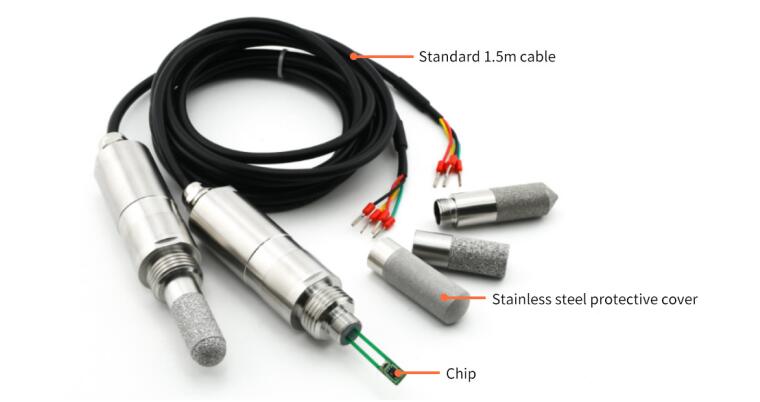-
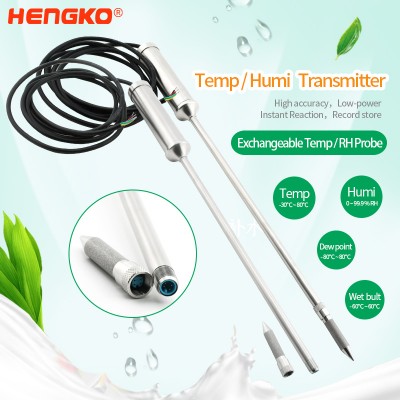
HENGKO Hand-Held HT-608 d Digital Humidity and Temperature Meter, Data Logger for Spot-...
The robust sintered metal housing of the non-sensitive HENGKO HT608 d handheld dew point meter data logger protects it against mechanical impacts. It can the...
View Detail -
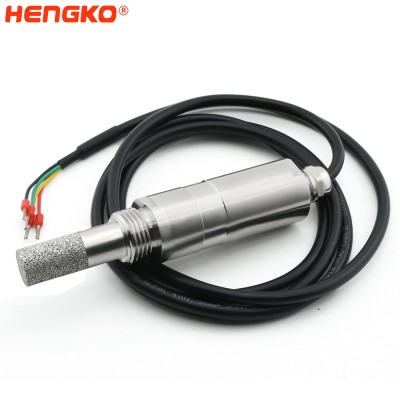
HG-602 Dew Point Sensor Transmitter for Industrial Drying Processes
With its compact design and durable stainless steel housing, the HG-602 industrial dew point transmitter provides accurate and reliable measurement data. It...
View Detail -
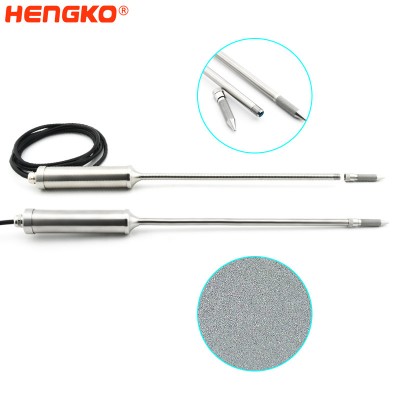
7.5″ Short, Narrow Relative Humidity Sensor Dew Point Sensor
IDEAL FOR MEASURING IN SMALL CREVICES AND IN BETWEEN TILES The HT-608c 7.5" (250mm) Short Narrow Wand Relative Humidity Probe has an 8mm diameter and is idea...
View Detail -
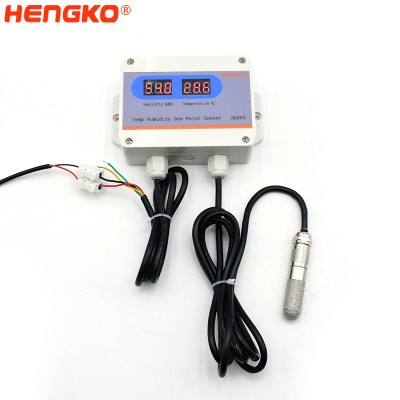
RS485 HG803 High Accuracy Duct Mount Dew Point Temperature and Humidity Transmitter wit...
✔ Temperature, Dew point, and Humidity Transmitter ✔ Precision ±0.3°C Temperature Accuracy ✔ ±2% Relative Humidity (RH) Accuracy ✔ Industrial Grade Sensor...
View Detail -
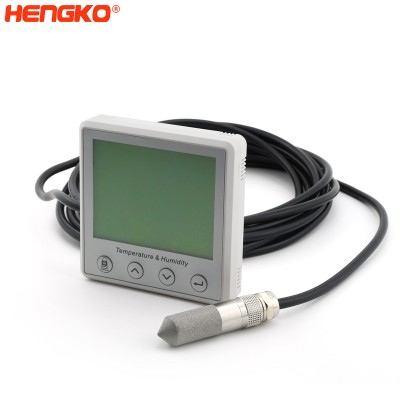
Industrial High Accuracy Dewpoint Temperature and Humidity Transmitter with Screen Display
✔ Precision Accuracy, Dew Point, Air Temperature & RH (Wall Mount Units Only) ✔ RS485 Outputs ✔ Three-line Display ✔ Wall Mount Units Only ✔ Built-in...
View Detail -

Handheld Hygrometer Humidity and Temperature Meter HG972 for Spot-checking Applications
Handheld Dewpoint Meter HG972 for spot-checking applications and field calibration offers accurate and fast measurement for industrial dew point appl...
View Detail -

Humidity Sensor Probe with Dew Point , -30~80°C,0~100%RH RS485/MODBUS-RTU HT-800
HT-800 series miniature humidity transmitter adopts RHT series temperature and humidity transmitter imported from Swiss Sensirion, which can collect tempera...
View Detail -
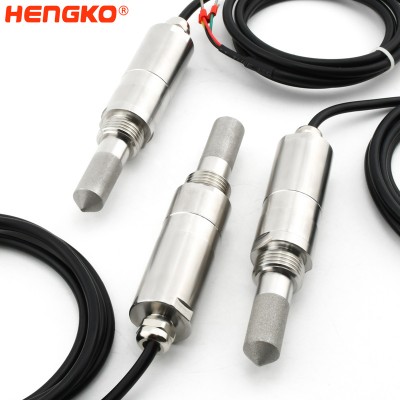
Fast Response Digital Dew Point Temperature and Relative Humidity Probe Sensor and Tran...
HENGKO HT-608 dew point transmitter is suitable for refrigerated air dryer/adsorption dryer of dew point monitoring, reducing insensitivity temperature zone,...
View Detail -
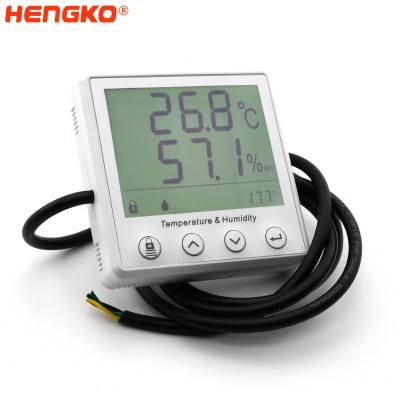
Temperature and Humidity Transmitter Built-in RS485 for museums and archives, productio...
Humidity and Temperature Transmitter Series HT802C ±1.5%RH wall transmitters with a certificate for demanding HVAC Typical applications include museums an...
View Detail -
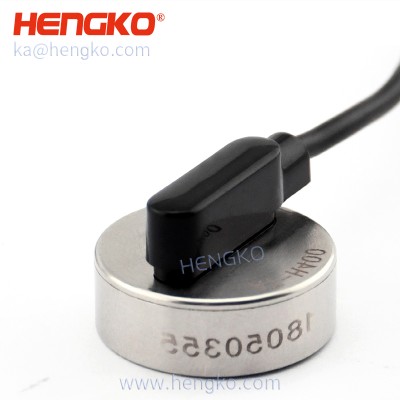
Easily installed reliable wireless dew point digital temperature and humidity sensor re...
HENGKO digital temperature and humidity sensor record measure the temperature and humidity of the environment in which it is situated. Applications include m...
View Detail -

HENGKO’s Smart DewPoint, Humidity and temperature transmitter with stand-alone hu...
HT802C is an RS-485 humidity and temperature sensor. The device not only measures temperature, and humidity but also can display dew point parameters. It ha...
View Detail
What Instrument Measures Dew Point ?
The instrument that measures dew point is called a "dew point hygrometer" or simply "dew point meter." There are several types of dew point meters, depending on the method used to determine the dew point. Some common methods include:
1. Chilled Mirror Hygrometer:
This type of meter cools a mirror until dew or frost forms on its surface. The temperature at which this happens is the dew point. A temperature sensor (often a platinum resistance thermometer) measures the temperature of the mirror.
2. Capacitive Hygrometer:
This device measures the dew point by observing changes in capacitance (the ability to store an electrical charge) of a material that responds to changes in humidity.
3. Psychrometer:
While not a direct dew point measuring device, a psychrometer uses two thermometers – one dry and one wet. The difference in the readings from these thermometers can be used to determine relative humidity, which can then be used to find the dew point from psychrometric charts or equations.
4. Impedance Hygrometer:
This instrument measures humidity by observing changes in the electrical impedance of a hygroscopic material.
5. Color-Change (Absorption) Hygrometers:
These contain a substance that changes color as it absorbs water. They are not as precise as other methods but can be used for quick approximations.
It's worth noting that the accuracy and range of the measurements can vary depending on the type of hygrometer and its calibration. Proper calibration and maintenance are essential for accurate dew point measurements.
Main Features of Dew Point Transmitter
A Dew Point Transmitter is an instrument used to measure the dew point temperature, which is the temperature at
which moisture will condense from a gas to a liquid. Here are the main features of a Dew Point Transmitter:
1. Accuracy:
Dew Point Transmitters are designed to provide accurate and reliable measurements.
They have a high level of accuracy, typically within +/- 2 degrees Celsius.
2. Range:
Dew Point Transmitters typically have a wide range of temperature measurement capabilities.
They can measure dew points as low as -100 degrees Celsius and as high as +50 degrees Celsius.
3. Response Time:
Dew Point Transmitters have a fast response time, typically within 5-10 seconds.
This allows for quick and accurate measurements.
4. Output Signal:
Dew Point Transmitters typically provide an output signal in either digital or analog form.
This allows for easy integration with other systems.
5. Durability:
Dew Point Transmitters are designed to withstand harsh environmental conditions.
They are typically made of durable materials such as stainless steel or aluminum
and are sealed to prevent moisture ingress.
6. Easy to Use:
Dew Point Transmitters are user-friendly and easy to operate.
They typically have a simple interface and require minimal maintenance.
Overall, Dew Point Transmitters are an essential tool for measuring moisture levels in various applications,
including HVAC systems, industrial processes, and food processing.
Why Use Dew Point Transmitter from HENGKO ?
In actual production, humidity and dew point problems can seriously affect the normal work of
machines and equipment or even cause equipment paralysis, so we need to pay enough attention
to temperature and humidity and dew point monitoring to adjust our environment in time to make
our machines work at a continuous temperature.
1.) Dew Point Measurement in Compressed Air Systems
In compressed air systems, excessive humidity in compressed air can result in dangerous corrosion.
It causes damage to the system or loss of quality for the end product.
In particular, Moisture in compressed air can lead to faults or failure of pneumatic, solenoid valves,
and nozzles. The same time, moisture harms lubrication in compressed air motors. It resulted in
corrosion and increased wear on moving parts.
2.) In the case of paintwork, humid compressed air causes defects in the result. Freezing Moisture
can lead to malfunctions in pneumatic control lines. Corrosion-related damage to compressed
air-operated components may result in system failures.
3. ) Moisture can negatively impact the required sterile manufacturing conditions in the Food
and Pharmaceutical industry.
So for most of production process, continuous dew point measurement with dew point transmitters
is very important, you can check our multi-function Dew Point Transmitter, HT-608
Main Advantage of Dew Point Transmitter :
1. Small Size and Accurate
Can Compact size, accurate monitoring, can be applied to more industries
Also with Sintered Melt Sensor Cover, Protect the Chip and Sensor Broken.
2. Convenient
Easy to installation and Simple to Use, Stable measurement enable long
calibration intervals and Reduced maintenance costs due to long calibration interval
3. Low Humidity Detection
Measures dew point down to -80°C (-112 °F), to +80°C (112 °F)
HT-608 Dew point Transmitter was specifically designed to provide reliable and
accurate low dew point measurements in O.E.M applications, even down to -80°C.
4. Harsh Environment Can Be Used
Withstands demanding conditions such as the combination of low humidity and hot air
Frequently Asked Questions
1. What is a temperature and humidity dew point meter?
A temperature and humidity dew point meter is a device that measures the temperature, humidity, and dew point (the temperature at which the air becomes saturated with water vapor) in a given environment.
2. How does a temperature and humidity dew point meter work?
A temperature and humidity dew point meter uses sensors to measure the temperature and humidity in the air. The sensor for temperature typically uses a thermistor, while the sensor for humidity uses a humidity sensor. The dew point is calculated using the temperature and humidity readings.
3.Why is it important to measure temperature, humidity, and dew point ?
Temperature, humidity, and dew point are important factors that can affect the comfort and well-being of people, as well as the operation of certain equipment and processes. For example, high humidity can make the air feel stuffy and uncomfortable, while low humidity can cause dryness and static electricity. In industrial settings, temperature and humidity can affect the accuracy and stability of equipment, such as computers and sensors.
4. What are some common uses for a temperature and humidity dew point meter?
Temperature and humidity dew point meters are used in a variety of settings, including homes, offices, factories, warehouses, and greenhouses. They are also used in scientific research, meteorology, and other fields where the measurement of temperature, humidity, and dew point is important.
5. How accurate are temperature and humidity dew point meters?
The accuracy of a temperature and humidity dew point meter depends on the quality of the sensors and the conditions under which the measurements are taken. In general, high-quality meters are accurate to within a few percent.
6. Can a temperature and humidity dew point meter measure temperature in both Fahrenheit and Celsius?
Yes, many temperature and humidity dew point meters can display temperature in both Fahrenheit and Celsius. Some meters allow the user to select the desired unit of measurement.
7. Can a temperature and humidity dew point meter be calibrated?
Yes, most temperature and humidity dew point meters can be calibrated to ensure accuracy. Calibration involves comparing the readings of the meter to known standards and adjusting the meter as necessary.
8. Can a temperature and humidity dew point meter be used outdoors?
Yes, some temperature and humidity dew point meters are designed for outdoor use and are able to withstand harsh weather conditions. However, it is important to protect the meter from direct exposure to sunlight, rain, and other elements to ensure accurate readings.
9. How do I clean and maintain a temperature and humidity dew point meter?
To clean a temperature and humidity dew point meter, use a soft, dry cloth to gently wipe away any dirt or debris. Avoid using harsh chemicals or abrasive materials, as these can damage the sensors or other components of the meter. It is also important to keep the sensors clean and free of obstruction to ensure accurate readings.
10. Where can I buy a temperature and humidity dew point meter?
Temperature and humidity dew point meters are available from a variety of retailers, including online stores, scientific equipment suppliers, and electronics stores. You can also find used meters through online marketplaces or specialized equipment dealers. It is important to choose a reputable seller and carefully review the specifications and features of the meter to ensure it meets your needs.
Have Any Questions about Dew Point Transmitter, You Are Welcome to Contact us
by email ka@hengko.com and Send Inquiry as follow form :
